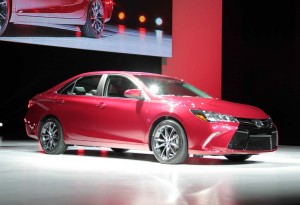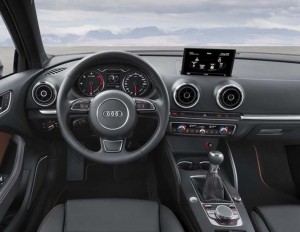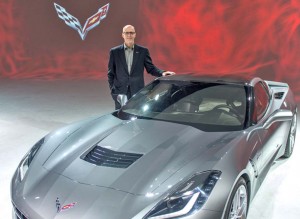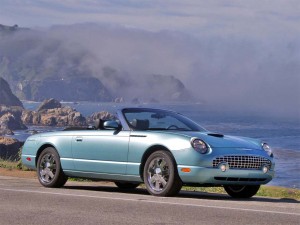While sophisticated technology has become an essential tool in the modern automotive styling studio, it still requires a human touch to bring designs to life.
“The artistic aspect is critical to car design,” stressed Tom Peters, the lead designers at General Motors for performance cars, during a discussion on car design at a meeting of the Automotive Press Association. “It’s through the human touch the passion is instilled in cars,” added Peters. “Our products are very tactile, you have to engage the senses.”
Though infotainment systems and fuel economy have becoming increasingly critical, competitive elements in today’s auto market, design remains one of the most important factors for shoppers choosing a new vehicle, studies reveal. In fact, there are many who contend that this is a new “Golden Age” for stylists as even brands like Toyota and Hyundai that traditionally settled for “plain vanilla” styling push for more passion in their products.
Trying to balance the emotional side with more practical matters like fuel economy and crash safety makes it essential to use advanced technology in the styling studio. Automakers can “crash” scores of vehicles in computer simulations without ever building a costly prototype.
But there are still plenty of projects that start out the old-fashioned way, said Peters, recalling that the original drawing for the current Chevrolet Camaro was drawn on a conventional sketch paid while the designer was waiting to catch a plane.
(Stylish new Alfieri Concept coming to market as part of new product blitz from Maserati and Alfa Romeo. Click Herefor details.)

It can be risky designing a replacement for a top-seller like the Toyota Camry, but the maker took a chance with its 2015 "refresh."
There is a great temptation for designers to go all digital, said Francois Farion, Senior Manager of Design Strategy at Nissan Design America in San Diego. The pressure has become particularly intense as carmakers come under pressure to produce cars that will appeal to younger buyers wrapped up in mobile phone technology and social media.
However, the human touch, along with an understanding of a vehicle’s heritage, are still important to good design, added Farion, who noted designers also face enormous pressure to limit costs.
Designing a midsize sedan for a company such as Nissan or Toyota is a major challenge because nobody wants to responsible for screwing up a top-selling model such as the Altima or the Camry. Hence the changes tend to be very modest, Farion said.
That said, Toyota took an unexpectedly aggressive approach to the mid-cycle, 2015 “refresh” of the Camry, changing every body panel but the roof. That was a clear response to the increasingly aggressive styling efforts in even safe, conservative market segments like midsize sedans that have scored well for products like the latest Nissan Altima and Ford Fusion.
(Striking Fisker Karma could make a comeback. Click Here for more.)
Where manufacturers once focused their primary attention on exterior design, interiors are more critical than ever to cars design and companies that get it right have a big advantage, added Jason Castriota, Creative Director of Castriota Designs – who has also served as Executive Design Director of Saab AB and Chief Designer of Pininfarina S.p.A.

Interior design has become increasingly critical, and Audi is often seen as a benchmark brand with models like the new A3.
Audi, for example, has succeeded in producing “serene” interiors that consumers have found enormously appealing, Castriota said. At the same time, the space inside the car is tightly regulated, which also puts limits on designers.
“Regulations make us better,” he suggested, something that might take some critics of government intervention by surprise. “You really have to make the most of the space you have,” Castriota said.
And that means interior design work has become more data driven, added the designer of the Saab Phoenix concept. “The exterior designs are more of moving target. The interior designers have the bigger challenge.”
While they may work in sheet metal, it’s not unusual to find automotive designers perusing what is happening in other realms of the design world, including the garment industry. Fashions change over time.
Peters noted at one point during his career, wood was never used inside a car because it was considered out of date. Now wood is being used because of both its association with luxury and its cachet as a sustainable material.
One fashion that appears to be fading away is the idea of using “retro” designs, largely because they didn’t work, noted Ben Ebel, a senior designer at Michelin.
“The DNA of a vehicle is critical, But you can’t copy,” noted Peters, who led the design team that prepared the Camaro and the latest edition of the Corvette.
“Certain elements are timeless and might have a familiar feel but they’re not a literal translation,” echoed Peters during a panel discussion during the APA event, which was guided by the theme for the 2015 Michelin Challenge Design, “Drive Your Passion: Engaging Senses, Soul, and Emotion.”
(Nissan testing new paint that could keep your car clean automatically. Click Here to check it out.)
Michael Robinet of IHS Automotive, who moderated the panel, said the big challenge designers now face is coming up with emotive vehicles that can inspire passion even in today’s high-tech world.
The panel is held each spring in advance of the “Eyes on Design,” a major car show organized each year to raise money for the Detroit Institute for Ophthalmology.
(Paul A. Eisenstein contributed to this report.)


